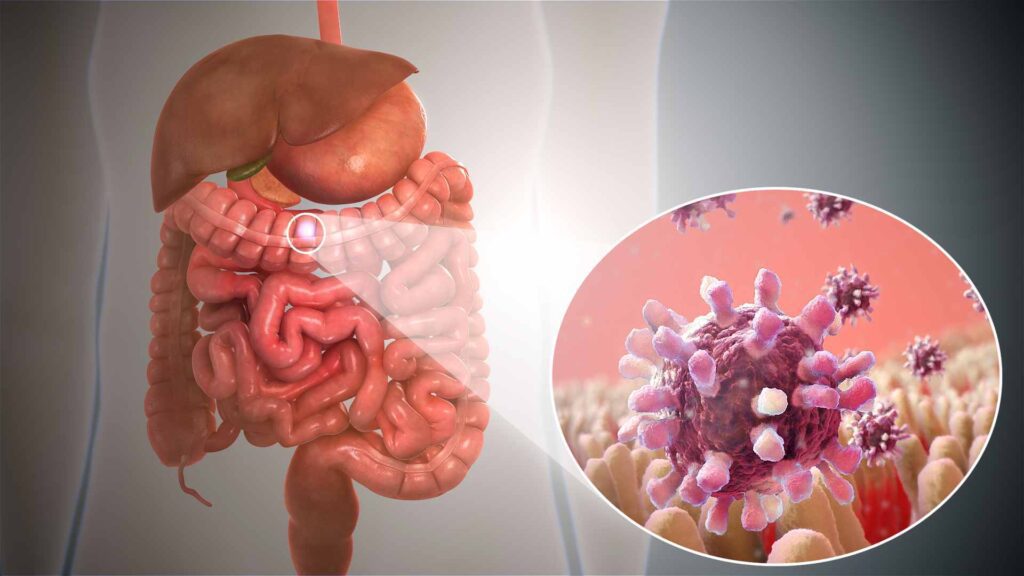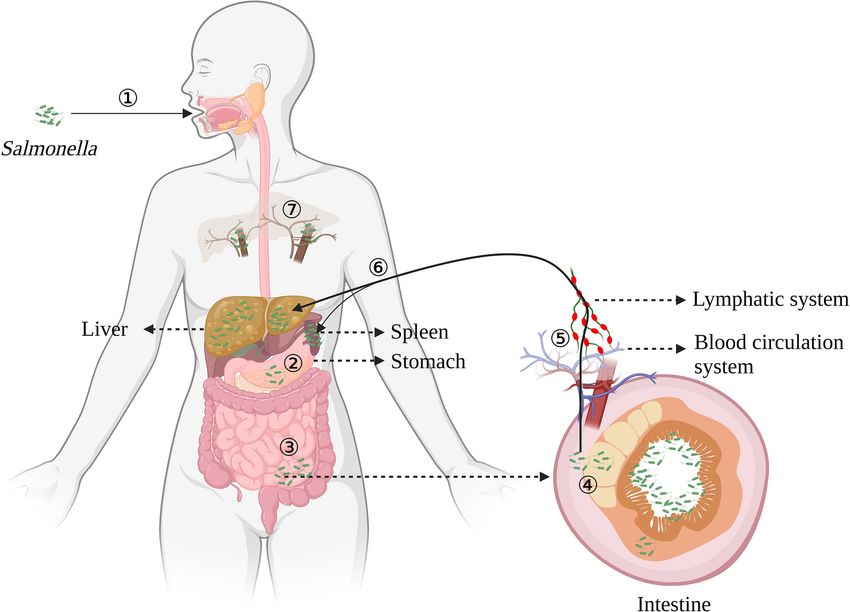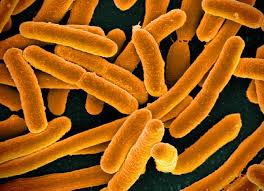Foodborne bacterial gastroenteritis, a common illness characterized by diarrhea, abdominal cramps, nausea, and vomiting, is a silent threat lurking in our food supply. Caused by a variety of bacteria, it poses a significant public health concern, affecting millions worldwide. This essay will focus on three notorious culprits: Salmonella, E. coli, and Vibrio species, exploring their characteristics, modes of transmission, and strategies for prevention.

Table of Contents
Salmonella: The Ubiquitous Contender

Salmonella is a ubiquitous bacterium, found in a wide range of animals, including poultry, livestock, and reptiles. It can also contaminate fruits, vegetables, and processed foods during handling or preparation. This bacterium thrives in the intestinal tracts of infected animals, spreading through their feces. Salmonella has great role in causing Food borne bacterial gastroenteritis.
Transmission Pathways of Salmonella:
Food Contamination: Undercooked poultry, eggs, and meat, particularly beef and pork, are common sources of Salmonella. Improper storage and handling further increase the risk of contamination.
Cross-contamination: Unwashed hands or contaminated surfaces can spread Salmonella from raw food to ready-to-eat items.
Water Contamination: Contaminated water sources, including wells and swimming pools, can lead to Salmonella infection.
Symptoms of Salmonella Gastroenteritis:
Diarrhea: Often watery and sometimes bloody
Abdominal cramps: Painful spasms in the abdomen
Fever: Can range from mild to high
Nausea and vomiting: Can occur in some cases
Headache: A common symptom
E. coli: The Versatile Villain

E. coli is a diverse group of bacteria, with most strains being harmless. However, certain strains, particularly enterohemorrhagic E. coli (EHEC), are notorious for causing severe foodborne illness. These bacteria are commonly found in the intestines of cattle and can contaminate meat, produce, and water.
Transmission Pathways of E. coli
Undercooked meat: Ground beef is a common source of EHEC, as bacteria can spread throughout the meat during processing.
Contaminated produce: Spinach, lettuce, and other leafy greens can be contaminated with E. coli through contact with contaminated water or manure.
Unpasteurized milk and juice: These products can harbor E. coli if they are not properly treated.
Symptoms of E. coli Gastroenteritis
Severe diarrhea: Often bloody and watery
Abdominal cramps: Can be intense and debilitating
Fever: May be mild or absent
Nausea and vomiting: Less common than with Salmonella
Hemolytic uremic syndrome (HUS): A serious complication that can lead to kidney failure
Vibrio: The Coastal Culprit
Vibrio is a group of bacteria that thrive in warm, salty waters. They are commonly found in seafood, particularly raw or undercooked shellfish. Vibrio parahaemolyticus and Vibrio vulnificus are the most common species associated with foodborne illness. Vibrio also have helping hands in causing Foob brone bacterial gastroenteritis.
Transmission Pathways of Vibrio
Consumption of raw or undercooked seafood: Shellfish, like oysters, clams, and mussels, are particularly susceptible to contamination with Vibrio.
Contact with contaminated seawater: Swimming or wading in contaminated water can lead to infection.
Symptoms of Vibrio Gastroenteritis:
Diarrhea: Often watery and sometimes bloody
Abdominal cramps: Can be intense
Nausea and vomiting: Common symptoms
Fever: May be present
Wound infections: Vibrio vulnificus can cause serious skin infections, particularly in individuals with weakened immune systems.
Preventing Foodborne bacterial gastroenteritis
Prevention is key to combating foodborne bacterial gastroenteritis. These measures can significantly reduce the risk of infection:
Proper food handling: Washing hands frequently, especially after handling raw meat or poultry, is crucial. Separate raw meat and poultry from other foods, and cook them to safe internal temperatures.
Through cooking: Cook meat and poultry to the recommended internal temperature to kill bacteria. Use a meat thermometer to ensure proper cooking.
Safe storage: Refrigerate perishable foods promptly, and avoid cross-contamination by storing raw meat and poultry separately from other foods.
Cleanliness: Keep kitchen surfaces, utensils, and equipment clean and sanitized.
Water safety: Drink only pasteurized milk and juice. Be cautious about drinking unpurified water, especially when traveling.
Shellfish safety: Eat only shellfish from reputable sources, and cook it thoroughly.
Conclusion
Foodborne bacterial gastroenteritis is a significant public health concern, affecting millions worldwide. Salmonella, E. coli, and Vibrio species are common culprits, posing a serious threat to our health. By understanding the transmission pathways of these bacteria and adhering to preventive measures, we can significantly reduce our risk of infection. Through collective efforts in food handling, cooking, and hygiene, we can protect ourselves and our communities from the silent threat of foodborne illness.
Frequently Asked Questions(FAQ)
What is vibrio species?
The family Vibrionaceae comprises a broad group of Gram-negative bacteria known as vibrio species. Usually, they are found in watery settings, especially in brackish and marine areas.
Define E. coli ?
E. coli is a diverse group of bacteria, with most strains being harmless. However, certain strains, particularly enterohemorrhagic E. coli (EHEC), are notorious for causing severe foodborne illness. These bacteria are commonly found in the intestines of cattle and can contaminate meat, produce, and water.
What are the ways to prevent Foodborne bacterial gastroenteritis ?
The ways to prevent from Foodborne bacterial gastroenteritis are
1. Proper food handling
2. Through cooking
3. By maintaining cleanliness as Keep kitchen surfaces, utensils, and equipment clean and sanitized.
Related Articles

